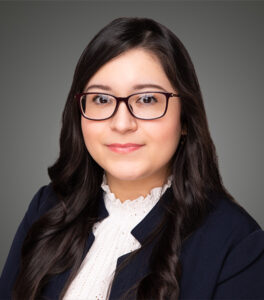As of the 2020 census, around 2.4 million Cubans reside in the United States. This includes migrants and their descendants. This article will explain the Cuban Adjustment Act, and how it can affect Cuban residents of the U.S.
Background of the Cuban Adjustment Act
In 1959 Fidel Castro overthrew the U.S.-backed government in Cuba led by Fulgencia Batista and subsequently declared himself a communist. This aligned Cuba with the Soviet Union, which at that time was a geopolitical rival with the United States as the Cold War was in full swing. The new Castro regime then went on to target their perceived enemies, including members of the religious, professional, educated and middle classes. These groups of people began leaving Cuba in droves. As the economy worsened, others sought to leave Cuba as well. Many of these refugees headed for the shores of the United States, since Florida lies just 90 miles away across the ocean.
In 1966, after years of distrust between Cuba and the U.S., the Cuban Adjustment Act was signed into law in the U.S. This Act allowed refugees from Cuba to enter the U.S. without visas, and then allowed for the adjustment of status of those who had remained in the U.S. for at least 2 years so that they could become lawful permanent residents. One of the benefits of this Act was to allow Cubans to stay in the U.S. once they reached here (automatic parole), without having to prove they were at risk of persecution in their homeland as refugees from other countries did.
In 1980, the Cuban Adjustment Act was modified to lower the time requirement to a minimum of one year residing in the U.S. before allowing refugees to begin the process to become lawful permanent residents. This was the year of the Mariel boatlift, during which over 100,000 Cubans migrated to the U.S. by boat. The Cuban Adjustment Act also protected Cubans from expedited removals from the country, which is when an immigrant is deported without formal proceedings.
Who is Eligible to Become a Lawful Permanent Resident Under the Cuban Adjustment Law in 2025?
Until 1995, any Cuban refugee who reached U.S. waters was allowed to remain in the U.S. In 1996, under the Clinton administration, this was changed to only allow Cubans who reached U.S. dry land to stay. This change meant that any Cuban refugees picked up in the waters by the U.S. Coast Guard were returned to Cuba.
In 2017, then-President Obama edited the law further to remove the previous special protections for Cubans who arrive in the U.S. Cubans who arrived on U.S. soil were now to be treated the same as any other migrants would be. Cuban politicians in Congress at the time decried this action, calling it “yet another shameful concession to the Castro regime.” Obama’s attempt to eliminate the Act was ultimately unsuccessful.
Now in 2025, amid the pausing of humanitarian parole and family reunification applications for immigration, some people have concerns regarding whether the Cuban Adjustment Act is in danger of being put on hold as well. The Cuban Adjustment Act is law, and can only be modified or repealed by an act of Congress. The Helms-Burton Act of 1996 deals with sanctions against Cuba, and codifies the Cuban Adjustment Act as law until certain changes occur in Cuba. It is beyond the power of one president to modify the Act. Cubans who have entered the U.S. can continue to apply for permanent residency.
Requirements for Cuban Adjustment Act program
There are a few requirements to be eligible for a green card under the Cuban Adjustment Act. They are:
- A native of Cuba
- Admitted to the U.S. after January 1959
- Reside in the United States for at least one year
- Filed form I-485
- The spouse or unmarried child of someone who meets the above requirements
Once the requirements are met and the paperwork is filed properly, the process may take anywhere between 9 and 30 months.
What Makes a Person Ineligible for The Cuban Adjustment Act?
Grounds for inadmissibility under the Cuban Adjustment Act include:
- Having a communicable disease
- Being a convicted criminal
- Having been involved in trafficking or prostitution
- Anyone involved in terrorist activities
The full list of inadmissibility grounds can be found here.
What to Do if You Have More Questions
Immigration regulations are changing every day. For help with the latest rules or any immigration questions you may have, fill out this form to schedule a time to speak with a qualified immigration attorney. If you have any doubts, do not delay! It has never been more important to have a knowledgeable and compassionate advocate on your side. For a full list of the visas we work on, see What Kinds of Visas Can Siri & Glimstad Help You With?





